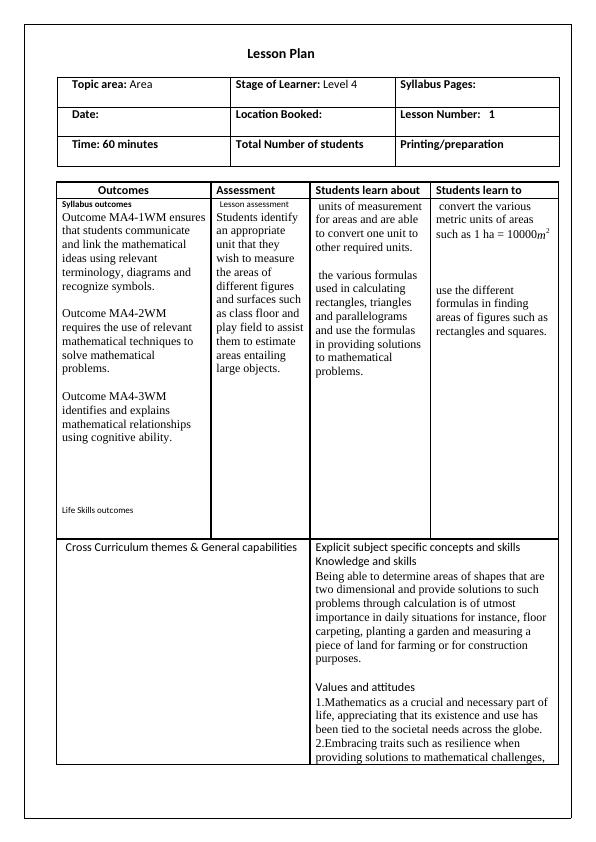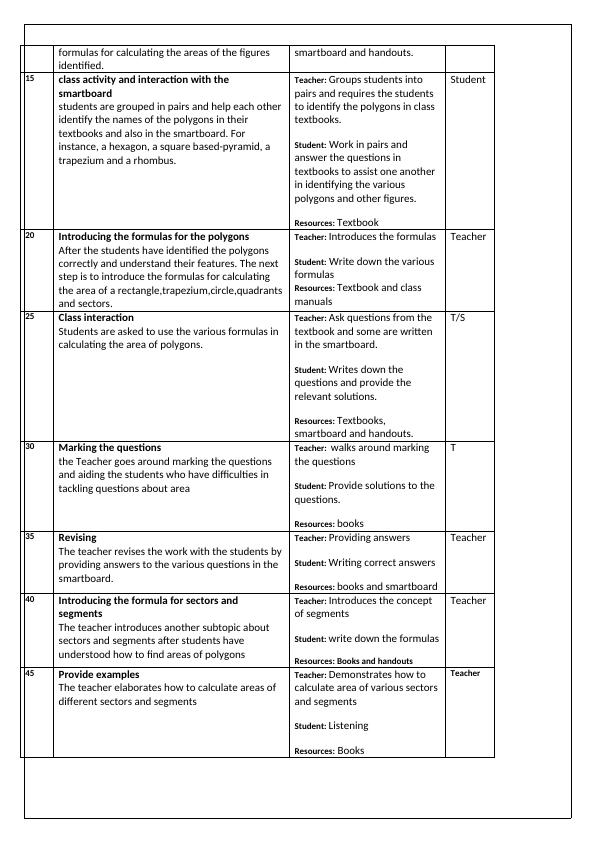Lesson Plan: Volume - Stage 4
Develop three sequenced and coherent lesson plans for a stage 4 Geography class, including resources and scaffolds, and explain teaching and learning strategies to cater to diverse learners.
20 Pages5048 Words386 Views
Added on 2023-06-09
About This Document
This lesson plan teaches students about volume, including drawing prisms and solids, identifying cross-sectional areas, and calculating volumes of prisms and related solids. The lesson also covers real-life applications of volume and units of measurement. The quality teaching elements include intellectual quality, quality learning environment, and significance. The lesson is designed for Stage 4 learners and aligns with syllabus outcomes MA4-1WM and MA4-2WM.
Lesson Plan: Volume - Stage 4
Develop three sequenced and coherent lesson plans for a stage 4 Geography class, including resources and scaffolds, and explain teaching and learning strategies to cater to diverse learners.
Added on 2023-06-09
ShareRelated Documents
End of preview
Want to access all the pages? Upload your documents or become a member.
Measurement and Geometry - General Mathematics Course
|18
|3781
|87
Lesson Plan Template for Secondary School - Area of Triangles
|4
|2652
|51
Lesson Plan Template for Secondary School - Desklib
|5
|2356
|174
Assignment on Lesson Preparation.
|8
|1874
|20
Understanding Equations: Teaching, Learning, and Assessment Activities
|7
|1495
|28
Framework of Pedagogies - PDF
|13
|702
|774




